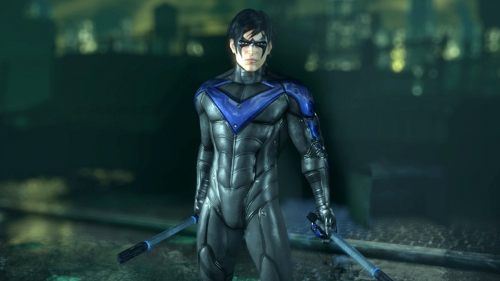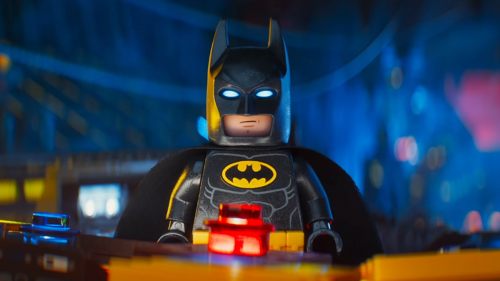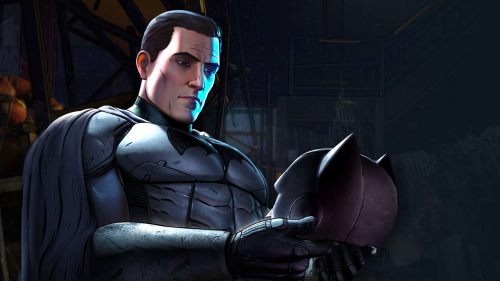Where The Hell Does BATMAN AND ROBIN Fit In 20 Years Later?
The LEGO Batman Movie is coming out this week (buy your tickets here), and in celebration, we’re going to spend the week looking at the lighter side of the Dark Knight.
In a world of dour, navel-gazing superheroes espousing nonsense about "1% chances" and punching people in their "perfect teeth", it's worth remembering that back in 1997 things were simpler. So, so much simpler. Batman had his own branded credit card, prominently-placed nipples on his skintight suit and his greatest foes used terrible puns as the chief weapons in their arsenal.
I'm referring of course to Batman & Robin, Joel Schumacher's impeccably trash-tastic movie from the distant past. A movie so terrible it's been hilariously torn apart by Rifftrax, How Did This Get Made? and even the director himself (on the hugely awkward audio commentary), alongside anyone who's ever written about movies online.
In Batman & Robin, there are about fifty different plot strands competing for attention at any one time - the two heroes are struggling to work as a team, Alicia Silverstone shows up and eventually becomes Batgirl, Bruce doesn't want to commit to girlfriend Elle Macpherson, Alfred almost dies - and the whole thing seems to take place on the most neon-lit backlot imaginable.
And yet, I kind of love it. It's beyond terrible, don't get me wrong, but it's also a lot of fun in its own weirdly unique way. Modern classics such as Civil War, Ant-Man, et al. are all well and good but let's face it, superhero movies nowadays are so desperate to be taken seriously they've forgotten how to have fun.
Batman & Robin may not be a completely coherent movie - why are there diamonds and dinosaur bones on display in the same museum exhibit? - but at least it's not pretending to be anything other than what it is.
The knockoff Danny Elfman score isn't half bad, and Schwarzenegger's Mr. Freeze boasts some seriously cool (sorry) make-up and styling. He also gets top billing, which is fitting considering his still wildly over the top performance is the strongest in a movie consisting mostly of ham, in spite of its top-notch ‘90s cast. I mean, the first line is "I want a car; chicks dig the car". And it's preceded by glamour shots of Batman and Robin's latex-clad butts.
The opening sequence alone is insane. Commissioner Gordon (who is barely even a character despite being Commissioner fucking Gordon) info-dumps who the villain of the piece is while they're leaving the Bat Cave, which suggests our heroes left before his call even came through. Were they just heading out for supplies and got lucky?
Later, in a daring escape, Freeze blasts off into space in a goddamn rocket, only to leap out of it, leading Batman and Robin to use doors to surf back down to earth. It's so fabulously, wickedly terrible. But it's this innate, otherworldly goofiness that makes the movie so charming, particularly two decades of darkness later (Batman himself has got especially emo in the intervening years).
Batman & Robin was intended to be a live action cartoon (strange, considering the deadly serious Batman: The Animated Series had just finished airing). The design of the Gotham cityscape, in spite of aged VFX, is still great, in particular, the observatory balancing on a statue's massive hand. And both The Riddler and Two-Face's coats showing up in the Arkham criminal property locker is a nice touch suggesting further attention to detail.
This is a scary, near-constantly dark Gotham where everyone appears to be completely crazy. The bizarre characters fit better here than they ever will in Christopher Nolan's Boston/Chicago/NYC take. And, although Batman & Robin veers off on a myriad of wildly diverting plot-lines, Schumacher's vision is clear throughout, while Akiva Goldsman (who also scripted Practical Magic, I, Robot and the upcoming Dark Tower adaptation) has characters dispensing lines like "I'm afraid you'll have to die" and making references to overnight mailing Bane with absolute sincerity.
Speaking of whom, is this really a sillier, or less authentic version? Is a dude who looks like a wrestler thanks to some mysterious soldier serum really less intimidating than a Bane with an Irish Traveller accent and a big winter coat? One could argue that Tom Hardy's Bane fits into Nolan's darkly earnest Batman universe in much the same way Schumacher's, having a Casablanca moment with Poison Ivy while wearing an ill-fitting disguise that hides approximately none of his true identity, makes total sense in his.
In 2017, the misguided feminist message about Batman and Robin being saved by Batgirl would likely be ripped to shreds (as would her suit's lack of nipples, especially in a world incensed by Laura Jane Grace's topless Rolling Stone shoot). The idea of two male superheroes being saved by a female is still strangely progressive, however, and it's something that was completely mishandled in Batman V Superman: Dawn Of Justice with the arrival, and quick sidelining, of Wonder Woman.
Batman also jokingly notes that Batgirl should've called herself something more PC, such as Batperson, seemingly foreshadowing what was to come. Note also how Batgirl scolds Ivy for giving women a bad name by using her feminine wiles to get ahead. These messages are muddled, and their impact deadened due to inclusion in a campy, borderline brainless movie, but the intentions are good. And, to the credit of both Goldsman and Schumacher, Batgirl and Ivy are bigger, bolder, more nuanced characters than either Wonder Woman or Lois Lane were in BvS.
There's a lot to unpack with Batman & Robin - is this the most dry ice used in a movie ever? Why is everything in Gotham powered by diamonds? How do the surveillance cameras always manage to be pointed in the right direction, capturing everything important? - but taken as a goofy, neon-bright comic book movie it works. And, especially nowadays, it's a nice reminder of what superhero movies used to be before we started worrying about realism.



